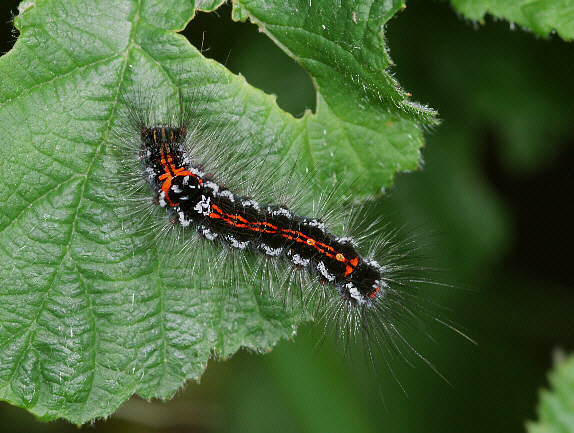
Introduction
The family Lymantrinae comprises about 350 genera and 2,500 species worldwide. There are 11 species recorded from Britain, including the Vapourer, the Black Arches, and two species which have become extinct in the UK – the Reed Tussock and the Gipsy moth.
Habitats
This species is found in woodland edge habitats, on scrubby grassland, along hedgerows, and in parks and gardens at altitudes between sea level and about 1000m.
Lifecycle
The larvae of most of the Lymantridae have dense tufts of hair on their back, hence the popular name “tussock” moths. Other species including the Yellow-tail moth have larvae that are devoid of dorsal tussocks but have lateral tufts of hair instead. In some species such as the Brown-tail Euproctis chrysorrhoea the hairs have irritating properties which can cause a rash in susceptible people. Many tropical species of Lymantridae also have irritant or poisonous hairs.
Adult
The adult Yellow-tail has as its name suggests, a bright yellow tip to its abdomen. The rest of the body and wings are pure white and unmarked.
